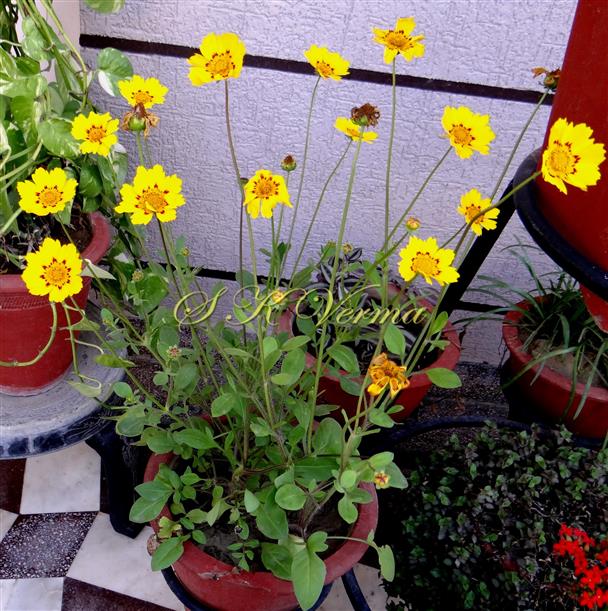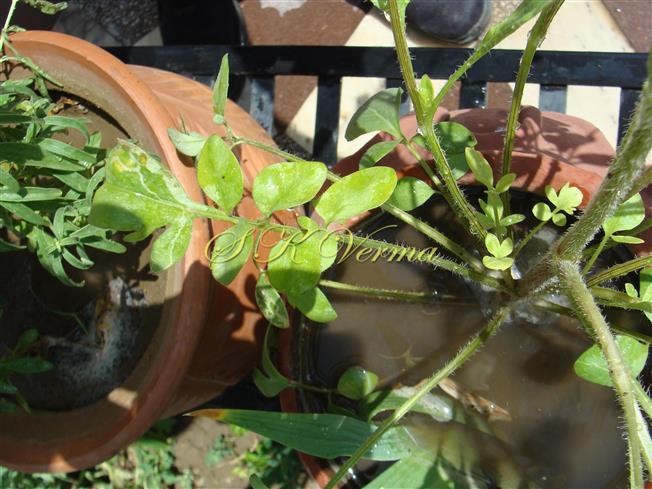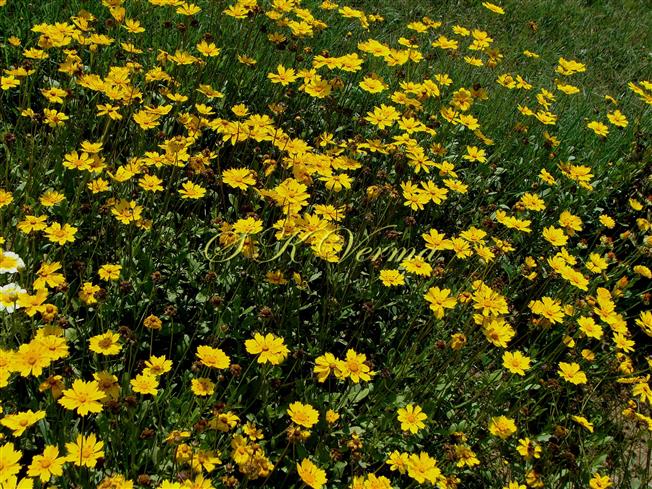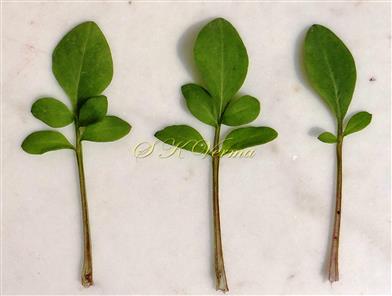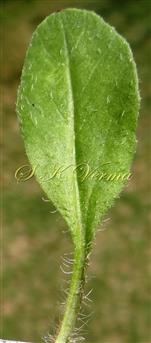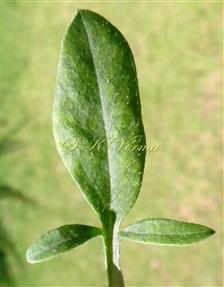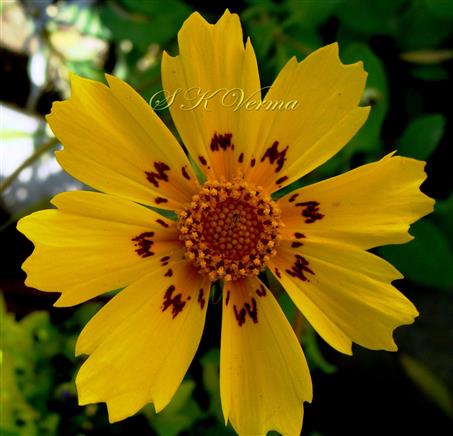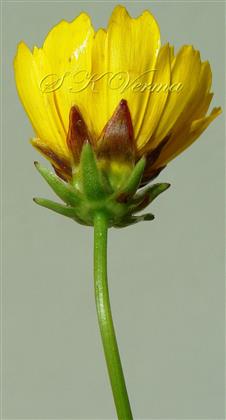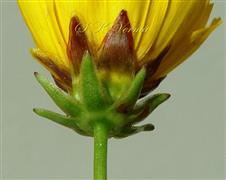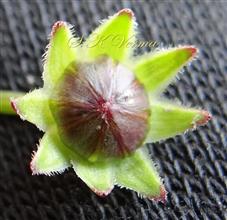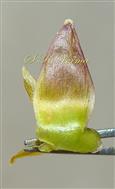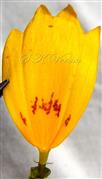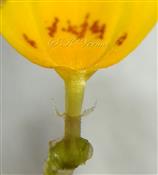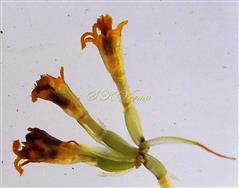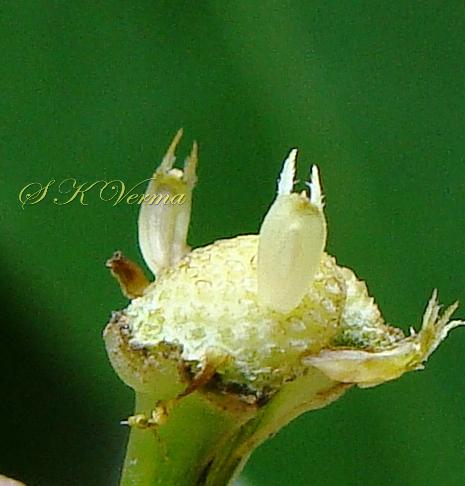COREOPSIS
Coreopsis
L., Sp. Pl. 2: 907. 1753; Gen. Pl. ed. 5: 388. 1754; Fl. China @ eFloras.org 20-21: 860; Strother, Fl. North Amer. @ eFloras.org 21: 185.
Annuals, perennials; subshrubs or shrubs, 10-80(-200+) cm, often rhizomatous or with cormiform bases or stoloniferous. Stem usually 1, erect, branched. Leaves opposite, basal and cauline or cauline, opposite, alternate or both; petiolate or sessile; blades simple, entire or pinnately or pedately lobed, glabrous or hairy. Capitula radiate, solitary or in open +/- corymbiform arrays. Calycular bracts (3-)8+, free, +/- herbaceous. Involucre +/- globose to cylindric, 4-25+ mm diameter. Phyllaries usually 2-seriate. Receptacle flat to convex, paleate; paleae deciduous, ovate to linear or subulate, flat, scarious. Ray florets: Mostly (5-) 8 (-12+), neuter or styliferous and sterile, or female and fertile. Corolla usually yellow, sometimes red-brown to purple proximally, sometimes wholly red-brown or pink to white. Disc florets: 8-150+, bisexual, fertile. Corolla usually yellow, sometimes red-brown to purple at tips or throughout; tubes equalling or shorter than narrowly funnelform throats, lobes 4 or 5. Cypselae obcompressed, +/- orbicular, ovate, oblong or linear, usually thin margined or winged, wings membranous to papery or corky, entire, lobed, toothed or ciliate, faces smooth or +/- papillate to tuberculate. Pappus persistent, of 2 bristly cusps or scales, sometimes pappus absent and shoulders of cypsela wings bristly and pappus like.
93 species
Coreopsis auriculata
Coreopsis auriculata
L., Sp. Pl. 2: 908. 1753; Strother, Fl. North Amer. @ eFloras.org 21: 193.
Annual to perennial herbs, usually 10-30 cm tall, often stoloniferous. Aerial nodes proximal to first peduncle usually 1-3, distal most 1-3 internodes 1-4(-8) cm long, terete, pubescent with multicellular hairs, longitudinal red stripes usually present. Leaves basal and cauline, opposite and/ or alternate; petioles long, up to 10 cm, pubescent, petiole and midrib/ rachis with adaxial groove; leaf blade simple or with 1-2(-4+) lateral lobes (sometimes these lobes may further be incompletely lobed): terminal leaf lobe 1.5-5 cm x 0.9-2.5 cm (and also the simple leaf blade), suborbiculate, ovate-elliptic or ovate-lanceolate; lateral lobes small; nearly of same shape as of terminal lobe; leaf surfaces pubescent, hairs multicellular. Capitula solitary terminal on peduncle, peduncle up to 30 cm long, sparsely hairy, hairs multicellular. Capitula 5-5.5 cm across, radiate, yellow. Calycular bracts 8-9, in 2 series, 5-10 mm x ca. 3 mm, ovate to oblong, green, margin membranous, hairy, red-tipped. Involucre +/- globose to cylindric. Phyllaries 8, in 2 series, lanceolate-ovate to lanceolate- deltate, 9-12 mm x 4-5 mm, with long red-purple stripes, upper half recurved, margin membranous. Receptacle flat to convex, paleate; paleae 4-5 mm long, subulate, deciduous. Ray florets: Usually 8+, usually in 1-series, neuter. Corolla tube short, ca. 2.5 mm long; limb ca. 2.3 x 1.5 cm, +/- obovate, apex 4-5-lobed, lobes unequal, yellow, base orange-yellow with a group of small reddish-brown patches. Pappus 2, free, slender, 1-1.5 mm long. Disc florets: Many, 100+, ca. 7-8 mm long, bisexual. Corolla yellow, ca. 5 mm long, tube shorter than narrowly funnelform throat, lobes 5, ca. 1 mm long, deltate, sparsely pubescent without. Ovary ca. 2 mm long; stigma hairy. Cypselae obcompressed, +/- orbicular to ovate or oblong, 1.5-2.5 mm long, brown black, wings absent. Pappus of 2 free bristly scales.
Common Names: Eared Coreopsis, Ear-leaved Tickseed, Lobed Coreopsis, Lobed Tickseed, Mouse-eared Coreopsis
